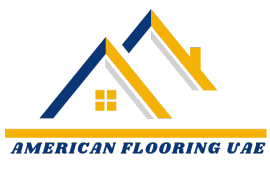The Game-Changing Benefits of Artificial Turf in Modern Sports
As someone who’s spent years around sports facilities and athletic fields, I’ve seen firsthand how artificial turf has transformed the way we play sports. Whether you’re a player, coach, or facility manager, artificial turf offers some impressive advantages that are worth considering. Let’s dive into why this modern playing surface has become so popular in sports.
Year-Round Play: No More Weather Worries
One of the biggest advantages of artificial turf is that it lets teams play and practice in almost any weather. Unlike natural grass fields that turn into mud pits after rain or become frozen in winter, artificial turf:
- Drains quickly after heavy rain
- Doesn’t form puddles or get muddy
- Stays playable even in cold weather
- Maintains its shape and firmness in all seasons
This means fewer canceled games and more consistent playing conditions throughout the year. For schools and sports clubs, this is a huge win—teams can stick to their schedules without weather-related interruptions.
Lower Maintenance Costs in the Long Run
While the initial cost of installing artificial turf is higher than natural grass, it pays off over time. Here’s why:
- No need for regular mowing
- No watering required (huge water savings!)
- No fertilizers or pesticides needed
- Less equipment maintenance
- Fewer staff hours needed for upkeep
A well-maintained artificial turf field can last 8–10 years before needing replacement. When you add up all the maintenance costs of natural grass over that same period, artificial turf often turns out to be more cost-effective.
Consistent Playing Surface for Better Performance
Athletes love artificial turf because it provides a reliable playing surface. This consistency helps in several ways:
- Even surface with no bumps or holes
- Same ball bounces and rolls every time
- Stable footing for quick direction changes
- Uniform playing conditions from end to end
- No bare patches or worn-out areas
This consistency helps players develop better skills and reduces the risk of accidents caused by uneven playing surfaces. It’s especially important in sports like soccer and football, where accurate ball movement is crucial.
More Playing Time, Less Recovery Time
Natural grass fields need regular breaks to recover from heavy use. Artificial turf, on the other hand, can handle constant activity. This means:
- Multiple games can be played on the same day
- Practice sessions can run longer
- No need to rotate between different fields
- Fields can be used for different sports
- No recovery time needed between events
For busy sports facilities, this increased usage capacity is a major advantage. Schools can schedule more games, and community sports centers can serve more teams without worrying about damaging the playing surface.
Environmental Benefits
While some might think natural grass is more eco-friendly, artificial turf has several environmental advantages:
- Saves millions of gallons of water annually
- No need for harmful pesticides and fertilizers
- Reduces air pollution from lawn mowers
- Can be made from recycled materials
- Old turf can be recycled when replaced
In areas dealing with water shortages, this water conservation aspect is particularly valuable. Many communities have switched to artificial turf specifically for its environmental benefits.
Improved Safety Features
Modern artificial turf is designed with safety in mind. Recent improvements include:
- Shock-absorbing underlayers for better impact protection
- Special infill materials that provide cushioning
- Better traction to prevent slips
- Antimicrobial treatments to prevent bacterial growth
- Heat-reducing technologies for hot weather
While the debate about injury rates on artificial versus natural turf continues, manufacturers keep improving their products to make them safer for athletes.
Versatility for Multiple Sports
Another great advantage of artificial turf is its versatility. A single field can be used for:
- Football
- Soccer
- Field hockey
- Lacrosse
- Rugby
- Baseball/softball
- Physical education classes
- Community events
- Golf
The field can be lined for different sports, and the surface works well for various types of cleats and playing styles. This multi-use capability makes artificial turf a smart choice for schools and community sports centers.
Perfect for Indoor Sports Facilities
Artificial turf has made indoor sports facilities much more practical. It provides:
- A realistic playing surface for indoor practice
- Year-round training opportunities
- Climate-controlled environment
- Better lighting options
- Protection from extreme weather
This has been a game-changer for regions with harsh winters or extreme weather conditions, allowing athletes to train and compete year-round.
Conclusion
While natural grass will always have its place in sports, artificial turf offers compelling advantages that make it an excellent choice for many facilities. From cost savings and environmental benefits to improved playability and versatility, it’s clear why more sports venues are making the switch to artificial turf.
The key is to carefully consider your specific needs—things like climate, usage levels, budget, and types of sports played—when deciding if artificial turf is right for your facility. With proper installation and maintenance, artificial turf can provide a reliable, safe, and cost-effective playing surface for years to come.
Buy Artificial grass! Get free consultation.





